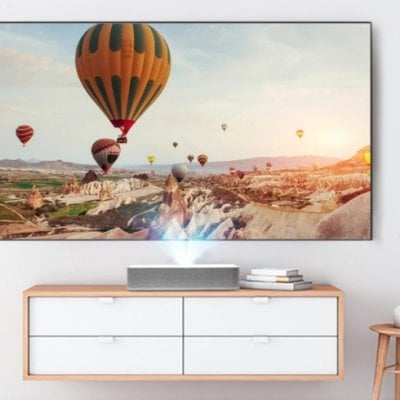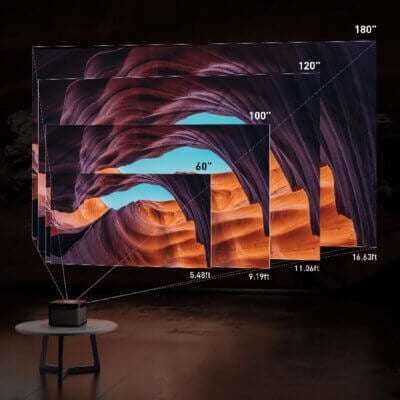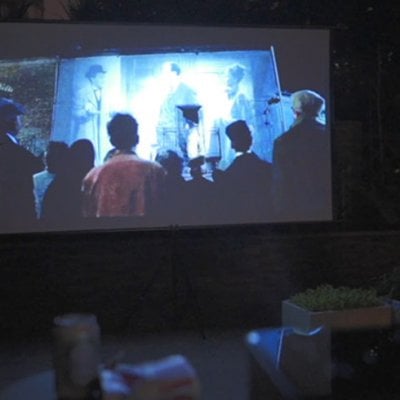Many projector beginners believe that the size of the projection screen is the bigger the better. They conceive of an ultra-big screen that can give a cinematic effect. But the fact is that not the biggest screen is the best.
So, how to choose screen size correctly?
There are two kinds of projector screens in the market, commercial screen and household screen.

1 Commercial Screen
When you choose a commercial screen, the size and the portable feature should be taken into consideration. Generally, the common size of a commercial screen is 84 inches. You can put it in your car boot.

Here are the specifications of common commercial screen:
84-inch screen size 171*128 (cm)
100-inch screen size 203*153 (cm)
120-inch screen size 244*183 (cm)
150-inch screen size 304*224 (cm)
200-inch screen size 406*305 (cm)
2 Home Screen
This kind of screen is restricted by the space of room.
Generally, the screen size should be slightly smaller than the wall, a space of 30-45 cm in width is set aside to get a full-screen effect. The preferred and common aspect ratio (Screen Width/Screen Height) is 16:9.

84-inch screen size 16:91771×996 (mm)
100-inch screen size 16:9 2214×1245 (mm)
120-inch screen size 16:9 2657×1494 (mm)
150-inchscreen size 16:9 3321×1868 (mm)
170-inchscreen size 16:9 3764×2117 (mm)
180-inch screen size 16:9 3980×2240 (mm)
200-inch screen size 16:9 4428×2491 (mm)
250-inch screen size 16:9 5535×3113 (mm)
300-inch screen size 16:9 6642×3736 (mm)
350-inch screen size 16:9 7749×4359 (mm)
400-inch screen size 16:9 8855×4981 (mm)
450-inch screen size 16:9 9962×5604 (mm)

You can measure the width and height of your wall before you buy a screen and refer to the specifications above.
In addition, if your room is not spacious enough, you’d better choose a UST projector (ultra-short throw ratio projector).
Related Post
What Projector Calculator of Projector1 Can do?




